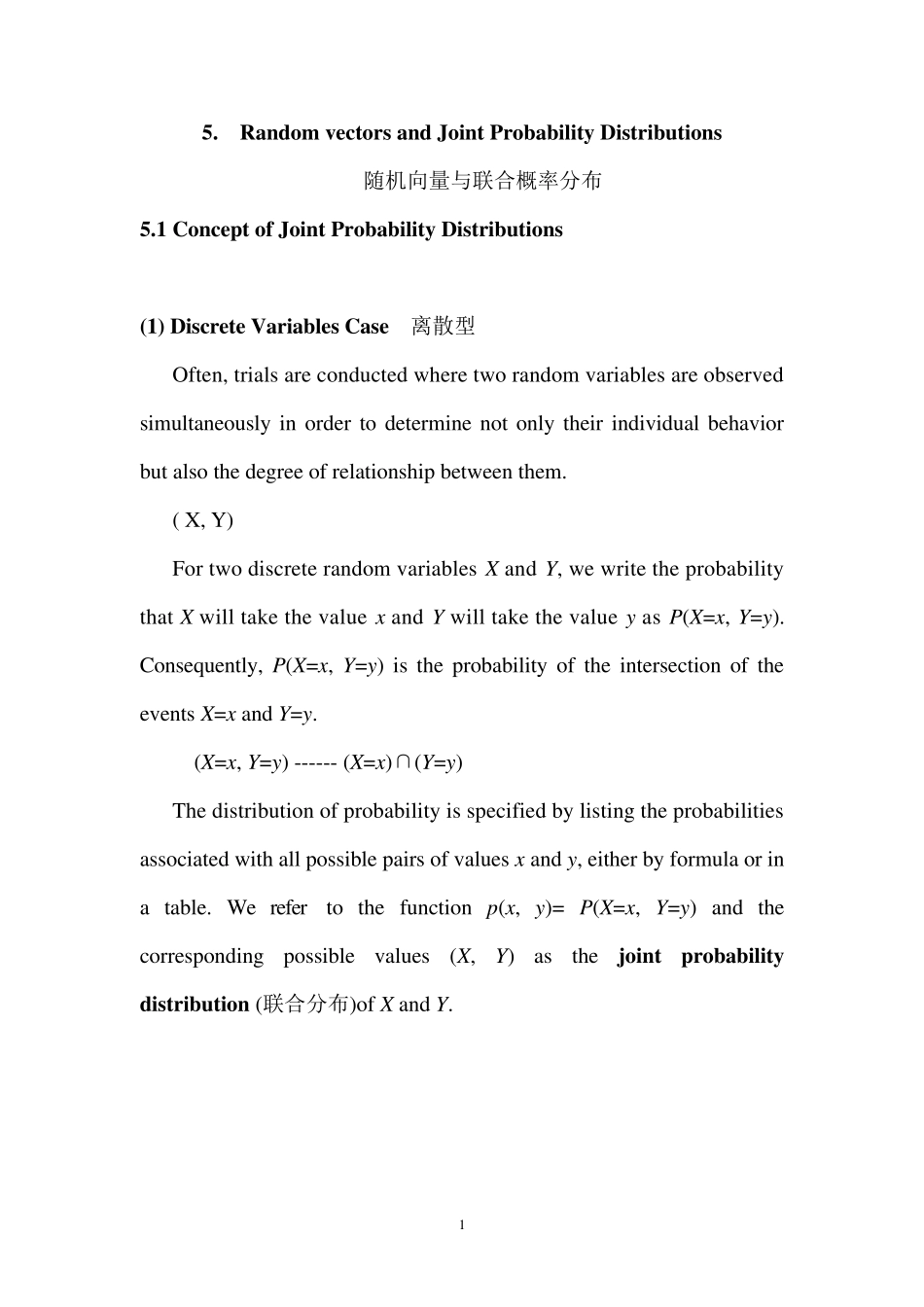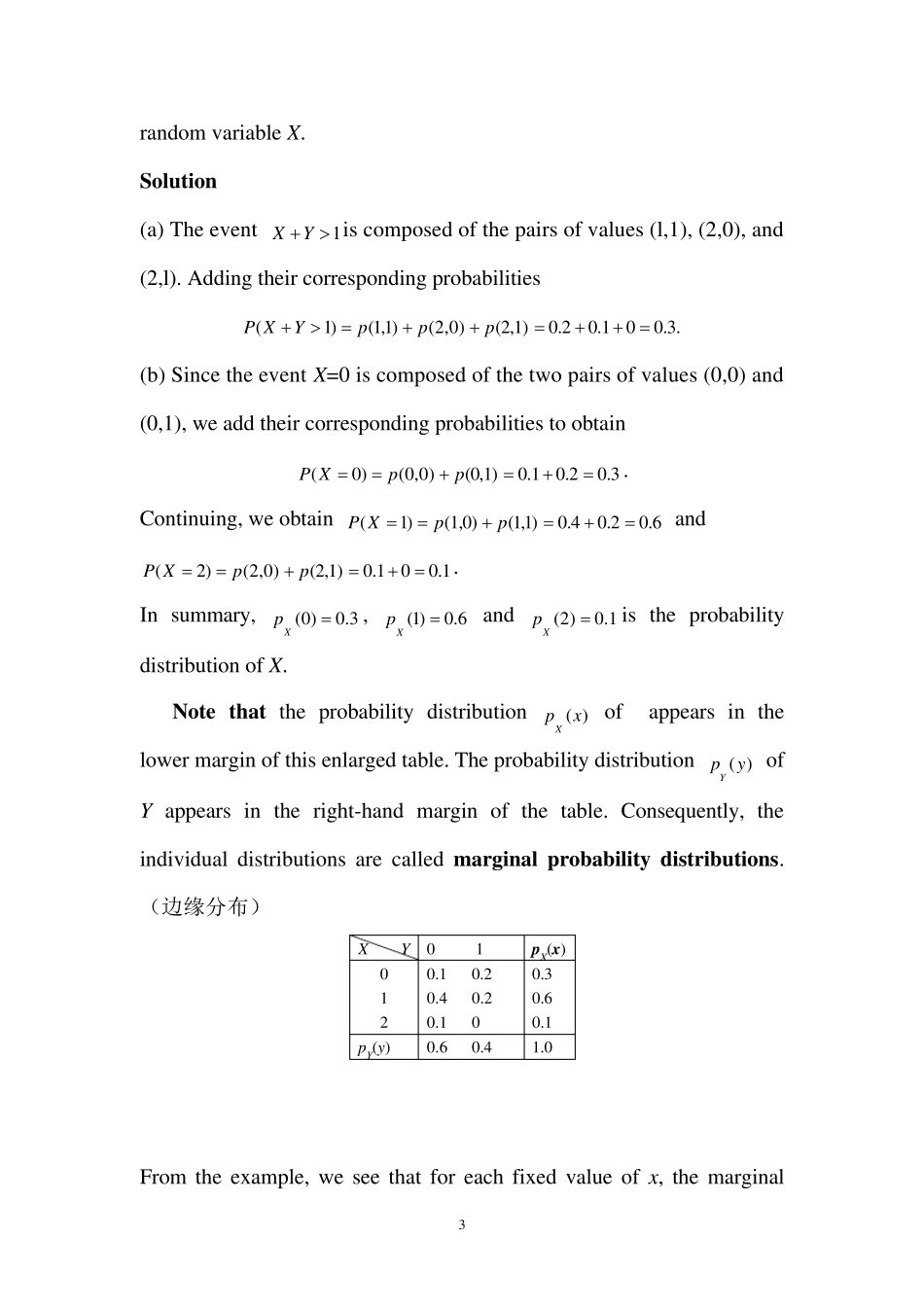1 5. Random vectors and Joint Probability Distributions 随机向量与联合概率分布 5.1 Concept of Joint Probability Distributions (1) Discrete Variables Case 离散型 Often, trials are conducted where two random variables are observed simultaneously in order to determine not only their individual behavior but also the degree of relationship between them. ( X, Y) For two discrete random variables X and Y, we write the probability that X will take the value x and Y will take the value y as P(X=x, Y=y). Consequently, P(X=x, Y=y) is the probability of the intersection of the events X=x and Y=y. (X=x, Y=y) ------ (X=x)∩(Y=y) The distribution of probability is specified by listing the probabilities associated with all possible pairs of values x and y, either by formula or in a table. We refer to the function p(x, y)= P(X=x, Y=y) and the corresponding possible values (X, Y) as the joint probability distribution (联合分布)of X and Y. 2 They satisfy ( , )0, ( , )1xyp x yp x y, where the sum is over all possible values of the variable. Example 5.1.1 Calculating probabilities from a discrete joint probability distribution Let X and Y have the joint probability distribution. X Y 0 1 0 1 2 0.1 0.2 0.4 0.2 0.1 0 (a) Find (1)P XY; (b) Find the probability distribution ( )()XpxP Xx of the individual y1 y2 … yj … x1 p11 p12 … p1j x2 p21 p22 … p2j … Xi pi1 pi2 … pij … … YX X 3 random variable X. Solution (a) The event 1XY is composed of the pairs of values (l,1), (2,0), and (2,l). Adding their corresponding probabilities (1)(1,1)(2,0)(2,1)0.20.100.3.P XYppp (b) Since the event X=0 is composed of the two pairs of values (0,0) and (0,1), we add their corre...


